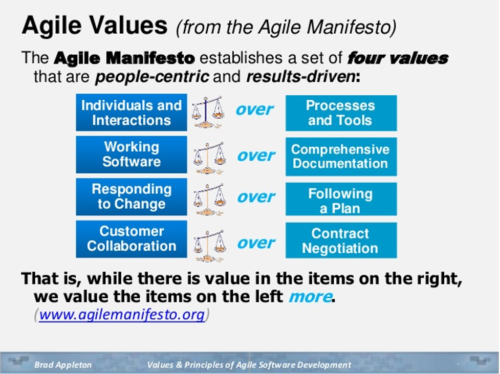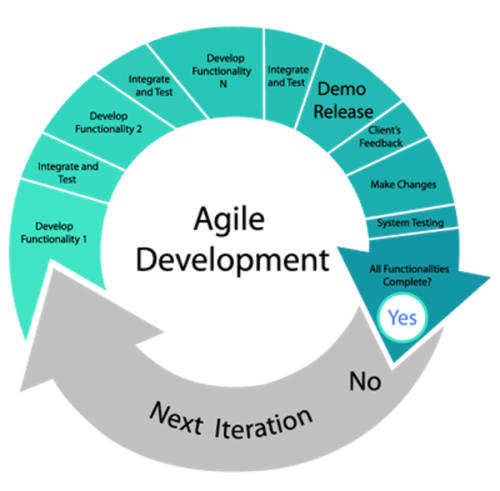Agile software development is an instrumental approach for creating a high-value product with minimal bugs and risks.
This method allows multiple teams and members to work iteratively during the development process instead of delivering a final product all at once that may require patches or updates.
Sometimes, software quality in Agile is mistranslated as the idea that everyone is responsible for software testing.
But within Agile software development, testing must include activities at all different levels, including estimates for the input into each iteration. Otherwise, testing happens last minute—or sometimes not at all, depending on time constraints.
Incomplete testing leads to unfinished final products—which is where velocity, or the speed in development, often plays an important role.
To have a successful Agile team, most software developers know that velocity is an essential component. But it’s not just about measuring velocity, as velocity is only one factor for success.
There are many other factors to measure when you want to assess the success of your Agile team. Let’s talk about a few of them.
How to Measure Success for Agile Teams
Besides velocity, how can you measure success for Agile software development teams? First, let’s start from the basics to understand what Agile is and then go from there to measure overall success.
Step #1: Understand What Agile Is—And What It Isn’t
In software development, Agile is the efficient process of identifying wants and needs through collaborative efforts with team members, end-users, and customers.
Those who work behind the scenes of software development refer to something called the “Agile Manifesto,” which outlines the general principles of Agile.
However, Agile is versatile and flexible.
In fact, nowhere in the Agile Manifesto states how many weeks per iteration, how much testing you should do, what should be accepted, or even the use of user stories. However, it does mention improvement—which is where metrics come in as a path to progress.
After all, if you want to improve, how can you know where you are or if you’re improving if you don’t measure?
Since there is no fixed recipe for Agile, the key is determining what recipe works best for you.
Step #2: Build Your Agile Based on Needs and Resources
Think about the last time you cooked dinner.
What ingredients did you already have, and what else did you need to make what you wanted? Using your existing resources (what’s in your pantry already) and applying outside ones (buying more groceries) is often the best way to create a full meal.
Agile is like cooking dinner because you need the right ingredients—which may require some trial and error while also allowing for versatility.
There is no set “menu,” and you may call for input and different resources, like asking for cooking help from friends or family.
Agile is based on both what you have already and what you need to improve. Similarly, you must pull the Agile components together to build your Agile process based on your needs and existing resources.
Drawing from what’s already there and developing a way to use outside resources within your team leads to more efficient and higher-quality outcomes.
Rather than a formula, Agile is a set of principles.
And from these, you determine how to measure your success. Once you’ve decided what resources and components make up Agile for your organization, you need to decide what would measure each component’s health.
Step #3: Measure the Health of Your Process
Often, clients ask for a “dashboard”—but what goes on the “dashboard”?
Dashboards need to show a clear plan, so many organizations implementing Agile first lean towards velocity as a means to measure their success. However, as mentioned before, velocity is just one piece in the dashboard that can measure your Agile’s overall health.
Agile processes have components that influence each other. Although these components are not necessarily linear or sequential in time, they have dependencies that point towards your Agile process health.
- Upstream metrics are what you do with the original software, including changing code, fixing bugs, and working to increase its value with your Agile team
- Downstream metrics are dependent on your upstream actions, which will impact the outcome and final product
In other words, a component that is dependent on another is considered downstream from that of an upstream component. Hence, in measuring a process, you would have some metrics that are “upstream” versus “downstream.”
Since the Agile process is based on principles and not a formula, hands-on experience is critical for Agile’s effective and efficient implementation.
Agile’s primary goal is to produce high-quality software faster, which means that anything that measures elements that impact or impede its velocity is vital to the process.
Therefore, both upstream and downstream metrics at each iteration are critical.
Moreover, one crucial upstream metric is technical debt since the build-up negatively impacts the velocity. That’s why it’s important to address:
- The level of technical debt,
- How those items in tech debt build-up, and
- What the root causes of tech debt are
What’s significant here is that while velocity is what many teams focus on, it is a downstream metric or the result of other parts of the process.
As you would guess, other upstream metrics would affect velocity, so if you can measure and improve an upstream metric, the downstream metric and velocity would naturally improve too.
Conclusion
By using metrics in Agile testing, you can better predict what you’re going to get. You can learn what to measure and how to connect these metrics to achieve real Agile goals, such as:
- Critical ingredients for long term successful improvement with metrics
- The vital parts of the process to measure in Agile and why
- How to connect metrics with Agile goals
- How to interpret metrics with an Agile looking glass
If you are looking to improve an already established Agile program or build out an Agile process from scratch, then it might be time to work with some professionals.
With more than 13 years of experience with Agile consulting and Agile QA testing services, XBOSoft has got your back.
Click here for more information about XBOSoft’s services that apply to the Agile testing methodology.
[Video link:https://www.youtube.com/watch?v=tqBNTKqJbA4]




Leave A Comment